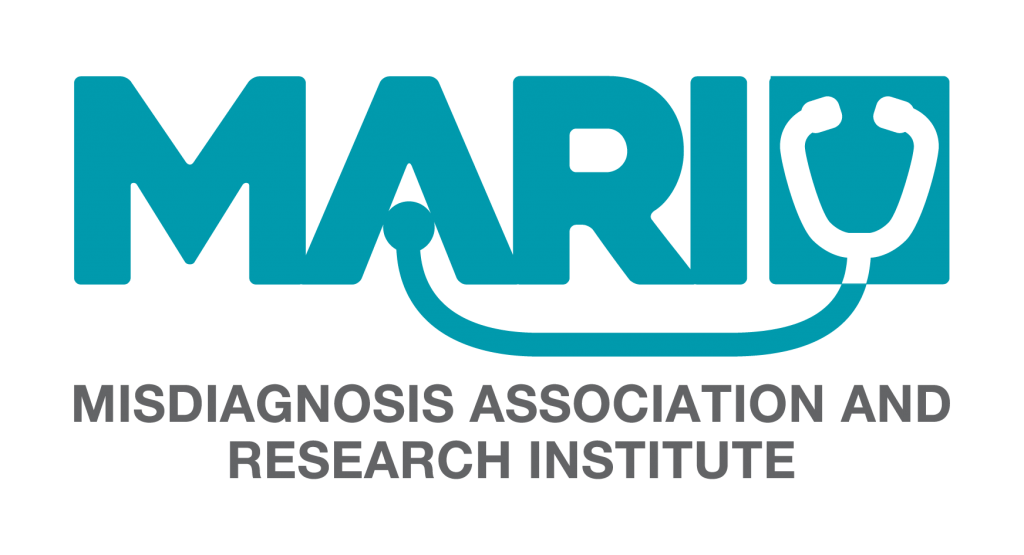Events and News
Misdiagnosis In Medicine
Types of Misdiagnoses in Medicine
Strategies to Reduce Misdiagnosis
Introduction
Diagnosis is one of the most important tasks performed by physicians or general practitioners. Misdiagnosis occurs when a patient receives a missed, inaccurate, or delayed diagnosis (Singh et al., 2017). To exemplify, in dermatology, Dr. Beigi emphasizes that skin inflammatory disorders like eczema could easily be misdiagnosed as a skin infection due to overlapping symptoms (Blissy, 2024). Misdiagnoses often occur when a practitioner prematurely concludes that one differential diagnosis is more likely than others and becomes
fixated on it (Blissy, 2024). The misdiagnosis could have a potentially negative impact on the
patient’s physical health, finances, and even mental well-being (Blissy, 2024). The topic of
misdiagnosis has always been raising concerns among the public due to the rise of political,
cultural, personal, and clinical issues associated with it (Balogh et al., 2015). According to a
survey conducted by the Betsy Lehman Centre for Patient Safety and Medication Safety
Error Reduction in Massachusetts in 2014, 23% of people or someone close to them have
experienced misdiagnosis at least once in their lifetime (Balogh et al., 2015).
Types of Misdiagnoses in Medicine
Misdiagnoses can be incorrect, missed, or delayed, and they can overlap extensively
(Singh et al., 2017). Missed diagnoses occur when a physician or lab tests fail to make a
diagnosis despite the presence of alarming signs and symptoms (Singh et al., 2017). Focusing
on just one possible diagnosis instead of looking at all options can lead to wrong or missed
diagnoses, or delays in getting the right diagnosis (Singh et al., 2017).
A study from the Centre for Biomedical Informatics and the Computational Health
Informatics Program, which looked at the PubMed database, found that the five conditions
most often misdiagnosed are tuberculosis (often mistaken for carcinoma), cysts (pericarditis),
tumours (liver secondaries), nerve sheath tumours (carotid body tumour), and neuroendocrine
tumours (diabetic foot ulcer) (Li et al., 2020).
Misdiagnosis could be influenced by many factors that include no-fault, system
cognitive, and patient-related factors (Graber et al., 2005). According to the statistics released
by Graber et al. (2005), system-related factors contributed to diagnostic errors in 65% of
cases and cognitive factors in 74% of cases. System-related factors are always involved in
organizational problems, and diagnostic errors could be the result of technical and equipment
problems (Graber et al., 2005). Moreover, teamwork and communication would also play an
important role in system-related misdiagnoses (Graber et al., 2005).
Furthermore, although there are many contributing factors to misdiagnosis, cognitive
biases—inherent mistakes in clinical reasoning—play a crucial part. Therefore, a deeper
comprehension of how cognitive biases affect clinical decision-making is likely to encourage
reflective practice and enhance patient outcomes (Bhatti, 2018). The cognitive factors could
include such things as faulty knowledge, faulty data gathering, faulty information processing,
and faulty verification (Bhatti, 2018). For instance, if a patient has a cough that produces
mucus, a fever, and sharp chest pain, and there have been five other patients with similar
symptoms who were diagnosed with pneumonia, this patient is also likely to be diagnosed
with pneumonia because this condition is easy for doctors to think of (Bhatti, 2018).
Additionally, language barriers substantially lead to miscommunication between
healthcare providers and patients, thereby affecting the quality of healthcare services and
patient satisfaction (Shamsi et al., 2020). Research indicates that language barriers hinder
medical practitioners' thorough understanding of patients' situations, leading to delayed
treatment, misdiagnoses, insufficient patient assessment, and incomplete prescription therapy
(Shamsi et al., 2020).
Consequences of Misdiagnosis
Misdiagnosis can lead to serious consequences, such as restrictions on travel or
lifestyle limitations due to incorrect treatment or advice (Olliaro & Torreele, 2021).
Diagnoses influence medical care, social security, veterans' benefits for disability, and even
affect research and education (Balogh et al., 2015). The possible consequences of diagnostic
mistakes may vary from negligible to severe, encompassing morbidity or mortality (Balogh et
al., 2015). Errors can be harmful because they can prevent or delay appropriate treatment,
lead to unnecessary or harmful treatment, or result in psychological or financial repercussions
(Balogh et al., 2015). However, in rare cases, harm may not occur if a patient's symptoms
subside despite an incorrect diagnosis (Balogh et al., 2015).
Diagnostic errors and near misses may also result in inefficiency in health care
organizations (e.g., the provision of unnecessary interventions) and unnecessarily increase
system costs (Balogh et al., 2015). Furthermore, having a personal or family history of a
misdiagnosis reduces the patient’s trust in their current physician (Suzuki et al., 2021).
Strategies to Reduce Misdiagnosis
Even though not many have been scientifically tested, several therapies that focus on
both thinking processes and system-related issues have been suggested, along with ways to
raise awareness and develop practical methods to handle diagnostic uncertainty (Singh et al.,
2016).
Reforming physician training and medical education is necessary to increase
diagnosis reliability (Singh et al., 2016). Although they make sense, strong government
policies aimed at bolstering primary care systems and making them safe and efficient are
frequently poorly carried out (Singh et al., 2016). Enhancing access to care and appropriate
expertise, guaranteeing practitioners' competency, offering high-quality diagnostic testing
services, creating a suitable work environment with safe and efficient health information
technology, and improving access to reference information resources are some of the more
difficult strategies (Singh et al., 2016).
Another inexpensive investment with significant potential to amplify change is patient
empowerment and engagement (Singh et al., 2016). As a safety net, patients can learn what
signs to look for, how long their sickness is likely to last, and how to get more care if their
condition doesn't get better or if new symptoms appear (Singh et al., 2016). Making it easier
for people to get diagnostic tests, providing doctors regular feedback, and making the best use
of diagnostic methods like two-step testing algorithms and repeat testing can help prevent
misdiagnoses (Singh et al., 2016) According to Dr. Beigi, the patient is required to disclose all pertinent health
information, such as their medical history, travel history, medication history, and personal
history; such disclosure would significantly decrease the likelihood of a misdiagnosis (Blissy,
2024). Additionally, telemedicine could facilitate timely intervention, particularly in
dermatology, by enabling remote assessments, which would reduce the time between
symptom presentation and diagnosis (Blissy, 2024).
Conclusion
Misdiagnosis is a rising concern among healthcare professionals and the public,
leading to consequences involving the emotional and physical well-being of patients. Wrong,
delayed, and missed diagnoses encompass the term misdiagnosis. Furthermore, the major
factors that could contribute to the misdiagnosis in medicine are systemic, cognitive, no-fault,
and patient-related issues. The most frightening consequences would include patient mistrust,
financial burden, and physical and psychological harm. The contributions of organizations
such as MARI to the misdiagnosis field have increased the awareness and education of healthcare professionals, paving the way for improved patient care in all countries worldwide.
To address issues such as misdiagnosis, we need to promote patient collaboration, enhance
physician training, improve medical education, and develop high-quality diagnostic tools. We
should not overlook the efforts of Dr. Beigi and the MARI organization, as these initiatives
would make for better health care by eliminating misdiagnosis and improving patient
outcomes and experiences.
References
Balogh, E. P., Miller, B. T., & Ball, J. R. (2015, December 29). Introduction. In Improving
diagnosis in health care. National Academies Press.
https://www.ncbi.nlm.nih.gov/books/NBK338600/
Bhatti, A. (2018). Cognitive bias in clinical practice—Nurturing healthy scepticism among
medical students. Advances in Medical Education and Practice, 9, 235–237.
https://doi.org/10.2147/AMEP.S149558
Blissy. (2024, August 9). Why your skin issue might be misdiagnosed! Dr. Beigi’s Insights
| The Blissy Experience Ep. 10 [Video].
YouTube. https://www.youtube.com/watch?v=yA7PpiNM600
Graber, M. L., Franklin, N., & Gordon, R. (2005). Diagnostic error in internal medicine.
Archives of Internal Medicine, 165(13), 1493.
https://doi.org/10.1001/archinte.165.13.1493
Li, C., Chen, E., Savova, G., Fraser, H., & Eickhoff, C. (2020). Mining misdiagnosis
patterns from biomedical literature. AMIA Summits on Translational Science
Proceedings, 2020, 360-366.
Olliaro, P., & Torreele, E. (2021). Managing the risks of making the wrong diagnosis:
First, do no harm. International Journal of Infectious Diseases, 106,
382–385. https://doi.org/10.1016/j.ijid.2021.04.004
Shamsi, H. A., Almutairi, A. G., Mashrafi, S. A., & Kalbani, T. A. (2020). Implications of
language barriers for healthcare: A systematic review. Oman Medical Journal,
35(2), e122. https://doi.org/10.5001/omj.2020.40
Singh, H., Schiff, G. D., Graber, M. L., Onakpoya, I., & Thompson, M. J. (2017). The
global burden of diagnostic errors in primary care. BMJ Quality & Safety, 26(6),
484–494. https://doi.org/10.1136/bmjqs-2016-005401
Suzuki, R., Yajima, N., Sakurai, K., Oguro, N., Wakita, T., Thom, D. H., & Kurita, N.
(2021). Association of patients’ past misdiagnosis experiences with trust in their
current physician among Japanese adults. Journal of General Internal Medicine,
37(5), 1115–1121. https://doi.org/10.1007/s11606-021-06950-y
Provided and edited by the members of MARI Research, Error in Medicine Foundation and MISMEDICINE Research Institute, including Athira Ramdas, Bukky Alausa, and Dr. Pooya Beigi MD. MSc.



